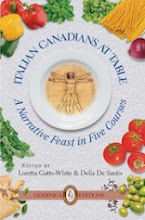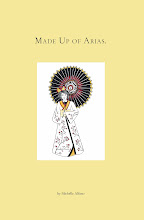 Goodbye to Berlin by Christopher Isherwood (Hogarth Press, 1939) 317 pp.
Goodbye to Berlin by Christopher Isherwood (Hogarth Press, 1939) 317 pp.The production of Cabaret we just saw at the Stratford Festival led me to this book of short stories of course. I like Isherwood's writing style epitomized by one of the opening phrases of the book: "I am a camera with its shutter open, quite passive, recording, not thinking. Recording the man shaving at the window opposite and the woman in the kimono washing her hair. Some day, all this will have to be developed, carefully printed, fixed."
This is Berlin in the early 1930s ... down on its heels, slightly decadent, volatile, exciting, frightening.
"Christopher Ishwerwood", the name of the first person narrator, is described as a communist, or a socialist, by other characters but his observations in print do not seem to be coloured much by his political persuasion. He tries to present the scenarios dispassionately, rarely expressing outrage at some of the scenes he describes.
Berlin during the Weimar Republic still fascinates. Here you will find the origins of the Sally Bowles character (based in part on the real life Scottish actress Jean Ross) in the play "I am a camera" and the subsequent film Cabaret in the short story "Sally Bowles". According to the writer Paul Bowles (from whom Isherwood borrowed the last name for the Sally Bowles character), the two lived in the same rooming house on the Nollendorfstrasse in Berlin where a plaque marks the spot.
Sally - green nail polish, cherry lipstick, atrocious German and all - is fabulous, amoral, fun and, sometimes, not particularly bright or perceptive. But you see why she mesmerizes Christopher Isherwood (and us as well). They were rumored to have had an on again/off again romance for years.
The abortion, the affairs, the fickleness, the oblivious disregard for the political situation in Germany - all feature here in the "Sally Bowles" story. Isherwood, the narrator, seems to be more an interested bystander rather than a sexually confused lover as depicted by Michael York in the film.
"On Ruegen Island" is a frank tale of two contrary lovers: the German working class boy Otto Nowak and the Englishman Peter Wilkinson as told by "Christopher", a mutual friend who shares their holiday. Otto is young, fun loving, mischievous. Peter is older, autocratic, oppressed by neurosis and madly jealous of Otto's other "interests". Clearly there is a homo-erotic tension here although sex is neither depicted nor spoken of explicitly. Peter is the controlling sugar daddy and Otto the obstreperous, selfish boy withholding his presence (and possibly sexual pleasures) from Peter to control him emotionally as he flirts with men and women alike.
Christopher wryly observes and records the disintegration of the relationship and eventual flight of Otto back to Berlin. Amazing to think of the ease with which Isherwood writes of the relationship in the late 1930s.
In "The Nowaks", Christopher visits the immediate family of Otto Nowak: the harassed mother Frau Nowak; the cheerfully comic father Herr Nowak; the sullen brother Lothar who is a Hitler Youth; the lazy sister Grete, and, the irrepressible Otto. They seem an average, homely, if struggling, German family unaware of the deluge to follow. They happily disparage the Jews but when Christopher points out that Hitler may eliminate the Jews altogether from Germany they are appalled and shocked at the possibility.
Frau Nowak departs with relief for a sanatorium, clearly driven to ill health and manic, hysterical behavior by the pressures of the family's financial stresses, poor nutrition, the worsening economy. The last image of the story is Christopher and Otto leaving the sanatorium and being watched by Frau Nowak and the other sickly inhabitants wrapped in blankets - a metaphor for Isherwood's imminent departure from Germany perhaps?
"The Landauers" is more subtly sinister. It appears to be an affectionate and slightly comical portrait of a prosperous Jewish family in Nazi Germany. Christopher becomes particularly close to Berhnard, the heir apparent of Landauers, their retail chain empire. The relationship is enigmatic. Is Bernhard gay? Is his interest in Christopher sexual? It ends with Christopher drifting from Berhnard and inadvertently learning of his demise some months later when he overhears two businessmen talking on a train. Officially, it was said that Berhnard had died of a heart attack but in the context of the times this becomes a euphemism for a bullet in the head and the confiscation of his property by the Nazis.
This piece of information, right at the very end of the story, is like a punch in the solar plexus after the gently mocking tone of the long story. The end is particularly bitter as the the two men relaying the fate of Berhnard then swiftly go on to share a ribald joke as the story ends.
Jews and Communists are beaten in the streets of Berlin, Germans disparage the Jews with the usual vicious racial stereotypes, businesses are confiscated, Isherwood's pupils disappear or are imprisoned, but life goes on ... only in the final story does Ishwerwood blatantly comment on the oblivious disregard of the Germans who seem to accept the violence, the violation of civil rights, the disppearance of "undesirables". He sets the stage for understanding the mindset of the German populace, the ugly slide into the horrors of the Holocaust. But the tale is told gently, without provocation, and, a quiet sadness.















